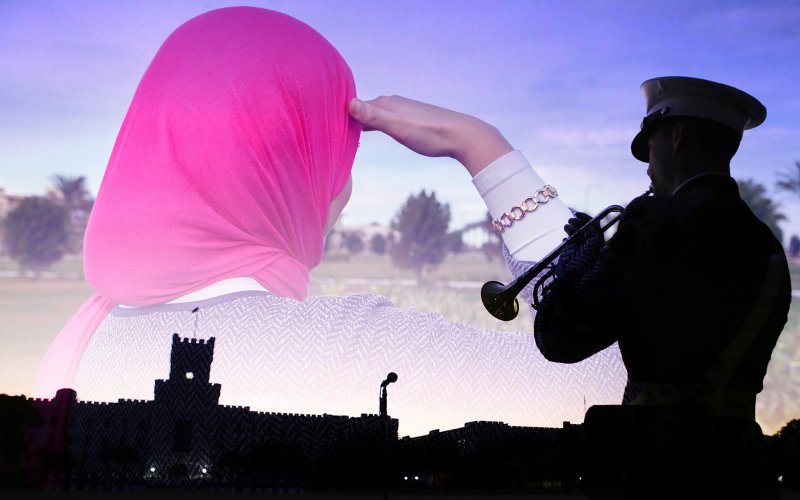Will The Citadel Allow Hijabs on Campus?

An incoming cadet has asked permission to wear the headscarf at the conservative military academy, which has yet to rule on her request.
A young woman’s request to be allowed to wear the hijab as a cadet at The Citadel military academy has sparked debate at the straight-laced school and outrage on social media.
The incoming cadet, who has not been named, asked that she be allowed to wear her hijab with the academy’s uniform, and if granted, her request may be the school’s first uniform modification in its 174-year history, according to The Citadel. “We do not currently have anyone that has a special religious accommodation for uniforms,” the school said in a statement Friday.
The Citadel remains less diverse than West Point and other military academies. But the school says it’s considering the request, which it has not yet ruled on.
Women have only been admitted to the school since 1995, and the school currently has only three Muslim students. Cadets are required to wear the strictly-regulated uniform at nearly all times.
The state-supported South Carolina college requires all students to participate in ROTC, though they are not required to serve after graduation. ROTC began allowing women to wear the hijab in its activities in 2011, after a Tennessee teen quit the program rather than remove her headscarf. The change, then, is more about The Citadel’s own history than participation in the programs it runs.
But some students seem to have already made up their minds on social media. One cadet says he was called a “bigot” for speaking out against the accommodations.
“If I valued liberal ideology, I would go to UC Berkeley. I’d wear, say, and do whatever I wanted and it wouldn’t cost the university any time or money for me to do so,” Nick Pinelli wrote on Facebook. “If I valued conservative ideology and wanted to challenge myself in a military environment, I would go to the Citadel.”
Yet the Citadel promises (PDF) to accommodate the religious needs of students “unless accommodation will have an adverse impact on a competing institutional interest including, but not limited to, cohesion, morale, good order and discipline, cadet welfare, safety and/or health.”
“Accommodation of a cadet’s religious practices must be examined considering these factors and cannot be guaranteed at all times,” the policy states.
Hijabs, of course, come in as many forms as there are Citadel cadets. Some are ostentatious and unwieldy while others are sleek and athletic, not to mention Olympic-approved. Some hijabis don’t wear a scarf that covers their necks at all—just their hair.
And while headcoverings might be breaking new ground at the Citadel, their history in the U.S. army is a century old.
Bhagat Singh Thind became the first widely-known Sikh to join the army in 1918. He fought, turban and all, for America at the end of World War I.
Thind was honorably discharged later that year. Born in the Punjab, he moved to the U.S. for college and applied for citizenship as a “free white man”—as some Indians were considered then—only to have it rescinded days later. It was later reinstated and then revoked by the Supreme Court, which deemed the Army vet not white enough for citizenship.
Thind finally got citizenship for the third and last time in New York in 1936. Tellingly, it wasn’t the headgear that set Thind back, but his race.
And a century later, Sikhs serve in their turbans in the army, despite a 1981 restriction on beards that requires them to get individual waivers for facial hair. Just this month, a West Point graduate and three others got long-term waivers for their faith.
While American service members are not yet allowed to wear the hijab, perhaps it’s only a matter of time, no matter what the Citadel rules. With young women being permitted to don the headscarf for ROTC, the rest of the U.S. military may not be far behind.
Политика конфиденциальности | Правила пользования сайтом







